Connecting a water heater and washing machine
 Due to the high humidity observed in the bathroom, it is not advisable to install and use electrical appliances there. However, for the convenience and comfort of family members, it is necessary to place some equipment in this room. In most cases, washing machines and water heaters are located here.
Due to the high humidity observed in the bathroom, it is not advisable to install and use electrical appliances there. However, for the convenience and comfort of family members, it is necessary to place some equipment in this room. In most cases, washing machines and water heaters are located here.
There is no need to rush to install the boiler and washing machine somehow; some people manage to organize their power supply with one outlet. Doing so is unsafe and may result in fire or electric shock. We will tell you how to connect a water heater and a washing machine correctly, in compliance with all the rules, in this article.
General connection principles
To be honest, in the bathroom, people usually do not limit themselves to turning on only the machine and the boiler. In addition to these units, a hairdryer, an electric razor, a “towel”, and lighting devices are used in the room. Of course, this is not entirely safe, but if you properly organize the electrical power supply for your equipment, you won’t have to give up your usual comfort. Correct wiring of devices minimizes the risk of short circuits, fire, or electric shock to the user.

Large consumers of electricity, such as boilers with a power of more than 3.5 kW, must be connected to the electrical network directly from a separate circuit breaker, be sure to provide for the presence of a low-voltage device on the site designed to turn off the power to the circuit in the event of a current leak. Or this is done using a difavtomat with an operating current of no more than 30 mA.
Plugging a heated towel rail into a separate electrical outlet does not look very aesthetically pleasing in the interior, so when forming an electrical circuit, it is advisable to connect it directly to the machine.
So what is the best number of outlets to provide in the bathroom when laying electrical wiring? In the case where there is no automatic machine installed in the room, one or two electrical points are enough, but if there will be a boiler and a washing machine located here, it is better to make three or four sockets.
Placement of sockets and electrical appliances
According to GOST R 50571.11-96 (IEC 364-7-701-84), part 7, section 701, the bathroom is conventionally divided into zones that indicate the permissibility or inadmissibility of installing electrical appliances in them. You can see these zones in the figure.
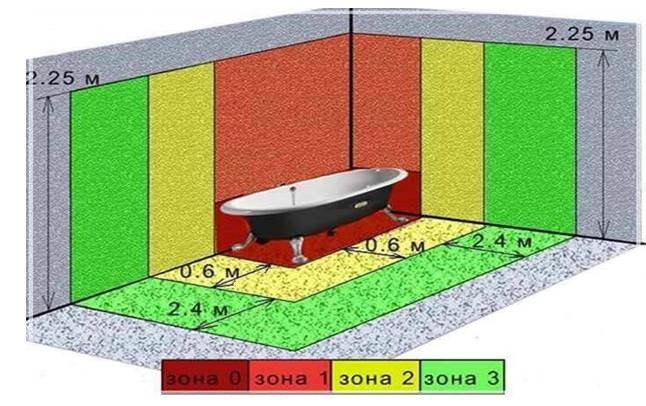
By looking at the presented image, the user can clearly determine in which place installation of electrical equipment is possible and in which place it is strictly prohibited. So:
- The zero zone includes places where there is water, such as a bathtub, shower stall, and washbasin. It is strictly forbidden to use devices with voltage over 12V while in close proximity to water. It is also prohibited for power sources to be located in this area;
- zone 1 surrounds the previous zone, usually adjacent walls; it is not allowed to install sockets here, but the area is suitable for placing a water heater;
- the second zone is located at a distance of 0.6 m from the boundaries of zone 0. Here you can install a boiler, as well as lamps characterized by protection class 2;
- zone 3 is conditionally safe; electrical points can be placed here and further into the room, but it is worth paying attention that sockets and switches must be protected from moisture and steam.
In the zero, first and second zones, the installation of junction boxes, distribution and control devices is prohibited.
They regulate the wiring in the bathroom and the PUE - rules for the construction of electrical installations. Paragraph 7.1.40 talks about the requirements for laying electrical wires. It describes that both open laying of cables of the required cross-section and installation of hidden electrical wiring are allowed. The permissible temperature of their insulation must exceed 170 °C.
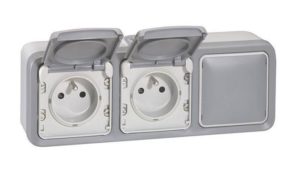 Clause 7.1.48 considers how possible it is considered possible to install plug sockets in a room with high humidity in general. According to the data, it is prohibited to install power points in public showers, and in apartments, houses and hotel rooms, sockets can be placed in the bathroom, but only in the third zone. It is imperative that electrical points be connected through isolating transformers, RCD devices or automatic devices programmed for an operating current of no more than 30 mA.
Clause 7.1.48 considers how possible it is considered possible to install plug sockets in a room with high humidity in general. According to the data, it is prohibited to install power points in public showers, and in apartments, houses and hotel rooms, sockets can be placed in the bathroom, but only in the third zone. It is imperative that electrical points be connected through isolating transformers, RCD devices or automatic devices programmed for an operating current of no more than 30 mA.
Thus, according to GOST and PUE standards, sockets must be connected through a residual current device, with an operating current of up to 30 mA, and located exclusively in the third zone. As for distribution boxes, it is recommended to place them in zone 3, or even better, completely outside the bathroom.
Please note that regulatory documents only describe the placement of electrical points according to designated zones.There is no information regulating at what height the socket should be located. Therefore, when thinking over the layout of power points, install them in such a way as to ensure convenient connection of devices to the network.
As mentioned above, it is permissible to install sockets in the third zone, moreover, the products must be equipped with a protective curtain. An excellent option is the Legrand Plexo range of high-quality electrical installation products.
It is necessary to comply with the PES requirement; this guarantees the safety of you and your family.
Electrical communication diagrams
The basic rule for placing powerful consumers in the bathroom is to turn them on through RCD. It is also necessary to install a separate machine for the washing machine and water heater. A possible connection diagram is presented below.
When installing a new bathroom electrical circuit, you can use both surface-mounted and built-in electrical products. According to the PEU, you can lay external wiring if you do not plan to undertake renovations in the bathroom, or you can groove the walls and hide the cables under the finishing materials.
Communications for large consumers
An automatic washing machine and a boiler belong to the category of powerful consumers of electrical energy, so to install them in a bathroom, it is necessary to install separate lines protected by automatic machines. You cannot use the same outlet for both the washing machine and the water heater. It is necessary to provide a separate power point for each device, which has an additional switchboard with a machine.
What wire is needed to connect the equipment? We select the cable cross-section based on the power of the electrical appliance. It is advisable to weld or solder the wires.The connection is made in a sealed junction box, completely protected from moisture.
When constructing an electrical circuit, it is advisable not to use terminal blocks; it is best to crimp using sleeves.
The junction box is installed outside the bathroom, but if this is not possible, install it indoors, choosing a panel with IP68 protection class. The water heater must be connected using an electrical panel with a two-pole circuit breaker equipped with an RCD.
Interesting:
Reader comments
- Share your opinion - leave a comment


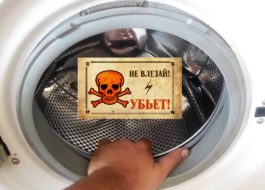
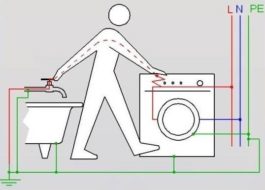
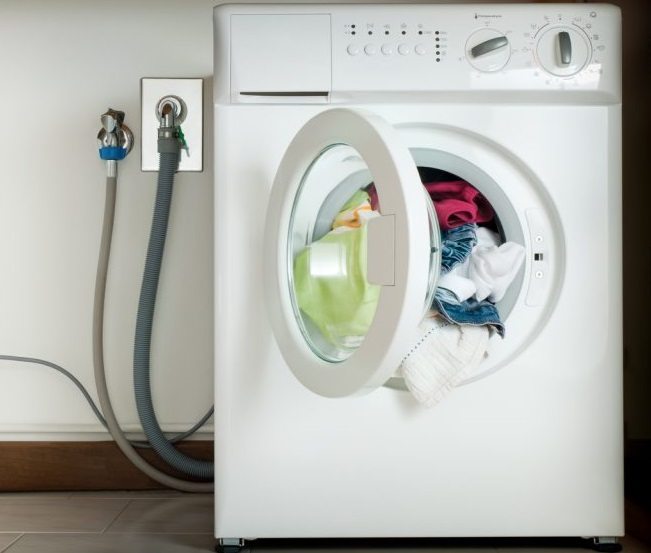
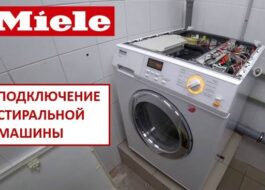















Add a comment